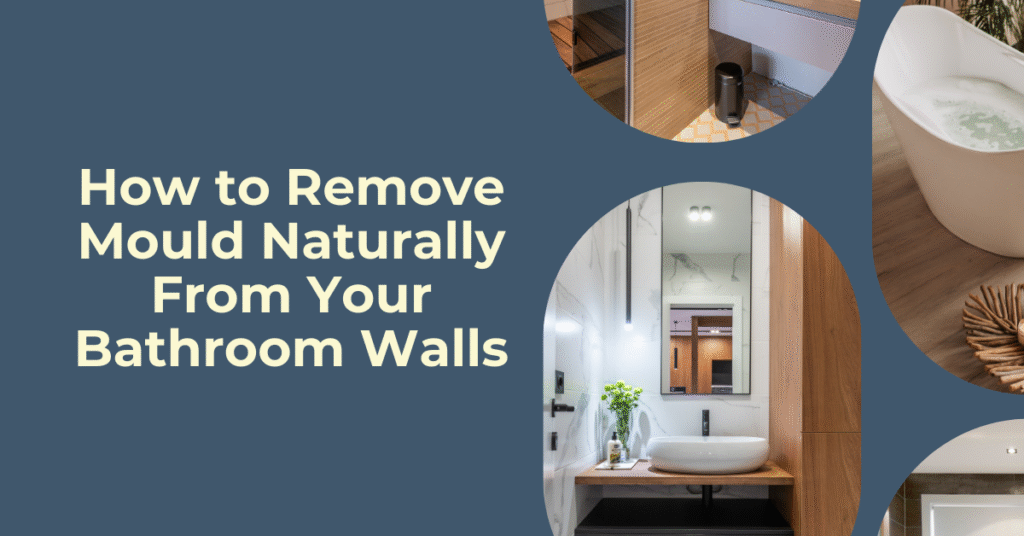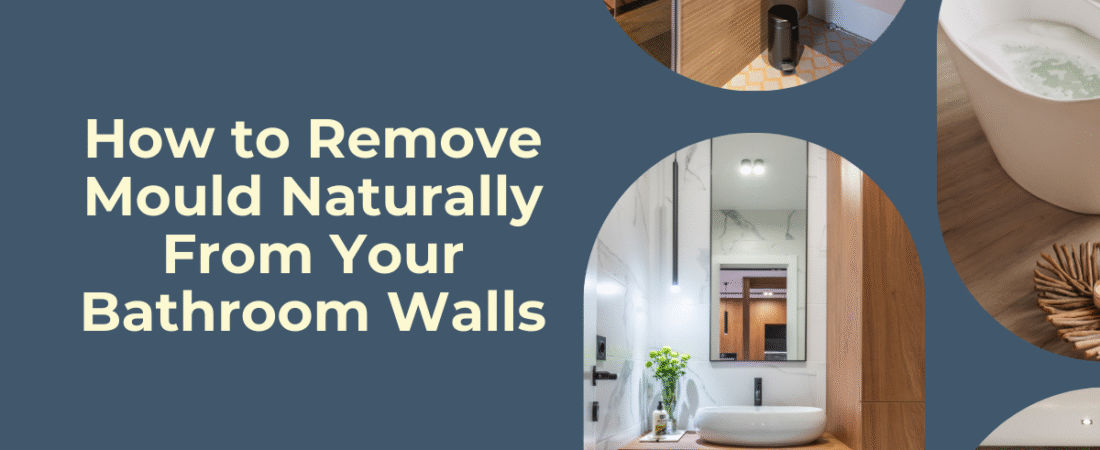Still, a musty trace of mold — hello to the club, If you’ve ever walked into your restroom and been saluted not by the comforting scent of lavender cleaner but by a faint. Bathrooms are earth’s playground warm, damp, and frequently inadequately voiced. And let’s be real, nothing wants their “ me- time sanctuary ” to double as a wisdom trial.
The good news? You do n’t need harsh chemicals or precious sprays to mould out. You can attack it with simple, natural fixes that are kinder to your lungs, your portmanteau, and the earth. Let’s dive into the why, the ugh, and eventually — the ahhh of mould junking.
The Problem: Bathroom Walls That Just Won’t Stay Clean
Mold is sneaky. One day your bathroom wall looks fine, the next it’s dotted with black or green specks that seem to multiply overnight. It thrives on:
- Moisture (hello, post-shower steam).
- Warmth (yep, your hot water obsession fuels it).
- Poor airflow (that tiny window you never open).
Apart from being unsightly, mold can trigger allergies, worsen asthma, and generally make your bathroom feel grimy no matter how much scrubbing you do.

The Agitation: Why You’re Tired of the Endless Scrub
Let’s be honest. Most of us have been there—standing with a bottle of bleach, rubber gloves, and a sinking feeling. You spray, you scrub, you gag on fumes, and then… Two weeks later, the mold is back, smirking at you from the same spot.
It’s frustrating because:
- Bleach doesn’t actually kill mold at the root—it just makes it disappear for a bit.
- Commercial sprays are expensive and filled with harsh chemicals.
- The cycle feels endless, leaving you wondering if your bathroom is cursed.
And don’t even get me started on how bleach ruins clothes and towels. Being there, I cried over that.
The Solution: Natural, No-Nonsense Ways to Remove Mould
Here’s the refreshing truth: you can ditch the chemical overload. Natural remedies not only work, but they often last longer because they attack mould differently. Plus, most ingredients are already in your kitchen.
1. White Vinegar: The Everyday Hero
Vinegar is acidic, which mould hates. It penetrates porous surfaces and kills mould at the roots instead of just bleaching it.
How to use it:
- Pour undiluted white vinegar into a spray bottle.
- Spray directly on the mouldy area.
- Leave it for at least an hour (don’t rinse too soon).
- Scrub gently with a brush and wipe clean.
Pro tip: The smell fades quickly, but if you hate it, add a few drops of tea tree oil.
2. Baking Soda: Gentle but Mighty
Think of baking soda as mould’s natural nemesis. It’s mildly abrasive, so it scrubs without damaging paint, and it deodorizes the musty smell.
Steps:
- Mix 1 teaspoon of baking soda with 2 cups of water in a spray bottle.
- Shake until dissolved and spray on the affected wall.
- Scrub lightly with a sponge or old toothbrush.
- Rinse, then spray again and let it dry—this leaves a protective layer.
3. Tea Tree Oil: Small Bottle, Big Power
This essential oil painting is n’t just for diffusers, it’s a natural antifungal hustler. Yes, it’s dearer than ginger, but a bitsy bottle lasts periods.
What to do:
- Mix 1 tablespoon of tea tree oil painting with 1 mug of water.
- Spray freehandedly on mouldy walls.
- Do n’t wash — let it dry and keep working its magic.
Your restroom will smell like a gym rather than a cleaning aisle.
4. Hydrogen Peroxide: The Silent Assassin
Still, bring out the peroxide, If you’ve got a stubborn earth that laughs in ginger’s face. It’s antibacterial, antifungal, andnon-toxic.
Method:
- Pour 3% hydrogen peroxide into a spray bottle( do n’t dilute).
- Spray directly and let it bubble for 10 twinkles.
- Wipe clean with a damp cloth.
5. Citrus Power: Lemon Juice
Failures are n’t just for lemonade — they pack natural antifungal parcels and leave behind a fresh scent.
How to use it:
- Squeeze fresh bomb juice onto the mould.
- Let it sit for 5 twinkles.
- Mite with a sponger and wash.
It’s stylish for lower spots, but it makes your restroom smell amazing.
Keeping Mould Away: Prevention That Actually Works
Drawing is only half the battle.However, earth will keep sneaking back like an unpleasant guest, If you do n’t fix the root causes.
Then’s how to outwit it:
- Improve ventilation: Open windows, install an exhaust addict, or at least keep the door ajar after hot showers.
- Wipe down walls: Quick formerly- over with a microfiber cloth after showers goes a long way.
- Seal grout and tiles: Mould loves previous grout — sealing makes it harder for spores to settle.
- Dehumidify: If your restroom feels like a sauna, a small dehumidifier can change everything.
- Fix leaks fast: Indeed bitsy drips produce an earth-friendly terrain.
A Real-Life Example
When I first moved into a bitsy apartment in Dubai, my restroom walls were principally earth attractions. I tried everything — bleach, fancy sprays, indeed recalling with dish cleaner. Nothing lasted. Eventually, I switched to ginger and baking soda pop. Was it glamorous? Nope. Did it work? Absolutely. The mould patches faded and, with better ventilation, they stayed gone for months.
That was my lightbulb moment nature really does beat chemicals when it comes to restroom walls.
Quick Comparison Table
| Natural Remedy | Best For | Bonus Perk |
| Vinegar | General mould removal | Cheap and always available |
| Baking Soda | Light scrubbing | Removes odours too |
| Tea Tree Oil | Stubborn mould spots | Smells fresh and relaxing |
| Hydrogen Peroxide | Deep-rooted mould | Antibacterial and antifungal |
| Lemon Juice | Small patches | Natural fragrance and shine |
FAQs About Natural Mould Removal
Q1. Does ginger kill earth permanently?
Not permanently, but it kills mould spores better than bleach. Combine it with forestallment styles for lasting results.
Q2. Is tea tree oil painting safe to use around kiddies and faves ?
Yes, in small quantities. Do n’t let them master shells directly, but once it’s dried, it’s safe.
Q3. Can I mix ginger and baking soda pop?
They neutralize each other if mixed directly. Better use ginger first, also drop with baking soda pop after.
Q4. What’s the fastest natural system?
Hydrogen peroxide works quickest on stubborn spots, but ginger is the easiest everyday result.
Q5. How frequently should I clean restroom walls to help the earth?
At least once a month, but a quick wipe- down after showers will cut down growth dramatically.
Conclusion: A Natural Win Against Mould
Removing earth naturally from restroom walls is n’t just realizable, it’s smarter. Ginger, incinerating soda pop, tea tree oil painting, and other simple remedies do n’t just cover up the problem; they attack it at the source. And when paired with forestallment( better ventilation, regular wipes, fixing leaks), you’ll eventually break the endless bleach- and- drop cycle.
So, the coming time you see those dark little spots creeping across your restroom wall, do n’t fear. snare your ginger spray, perhaps a gusto of tea tree oil painting, and show mould to the door — naturally.
Want more practical home hacks? Or perhaps you’re in Dubai and about cutting costs on everyday rudiments? From saving on auto insurance quotes to choosing affordable plutocrat transfer services, making smarter choices is easier than you suppose.

